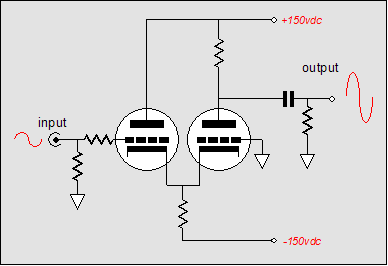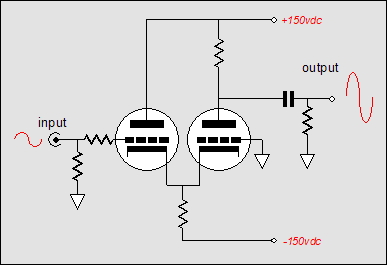I'm going through my tubes and see that I have many different dual triodes with common cathode, both voltage and power types. What to use them for? I was buying tubes when I first became addicted to this unhealthy addictive hobby fulfilling my dual triode category and wasn't noticing the common cathodes. Because I didn't know better.
The differential amp topology seems like the natural and correct use for common cathode dual triodes and I'm looking at trying some of these tubes for a balanced input from my XLR out DAC. I suppose anywhere I want to parallel the units is also a good chance to try these tubes too.
What other natural and correct topologies are a good application for the common cathode dual triode?
The differential amp topology seems like the natural and correct use for common cathode dual triodes and I'm looking at trying some of these tubes for a balanced input from my XLR out DAC. I suppose anywhere I want to parallel the units is also a good chance to try these tubes too.
What other natural and correct topologies are a good application for the common cathode dual triode?
The way I see it. All the tied cathode in a common cathode circuit does is prevented it from using an un-bypassed cathode resistor as a mean for DC bias. As long as you take care of that (ie. bias at the grid and ground the cathode), you should be able use the two triode for two separated common cathode amplifier.
Input cathode follower, directly coupled to grounded grid amplifier.
Doesn't sound promising. Your cathode follower input can be very high impedance, and your grounded-grid amp's anode load gain … is not appreciably different overall than had you just used a single triode to do the amplifying with the same anode load. Sorry, I'm feeling stupid — must be missing something.
GoatGuy ✓
The way I see it. All the tied cathode in a common cathode circuit does is prevented it from using an un-bypassed cathode resistor as a mean for DC bias. As long as you take care of that (ie. bias at the grid and ground the cathode), you should be able use the two triode for two separated common cathode amplifier.
GE style phono preamps follow that "recipe". The grid leak, AKA contact, bias employed is OK at mV. signal levels, but is unsatisfactory at higher levels.
If the same bias voltage for both triodes is acceptable, bias applied at the common cathode can be achieved with pre-charged NiMH batteries or (possibly) LEDs. When such circuitry is operating, a NiMH battery is receiving a trickle charge.
RF push-pull amplifiers are a common use for common-cathode, both triodes and tetrodes. In tetrodes the screen may be commoned too. There is a distinction to make between two devices wired in common and a single device with dual grids/anodes.
Thanks! I'm one of John Broskie's Patreon subscribers but he's so prolific reading everything could take a year!
- Home
- Amplifiers
- Tubes / Valves
- Differential amp and common cathode dual triodes

